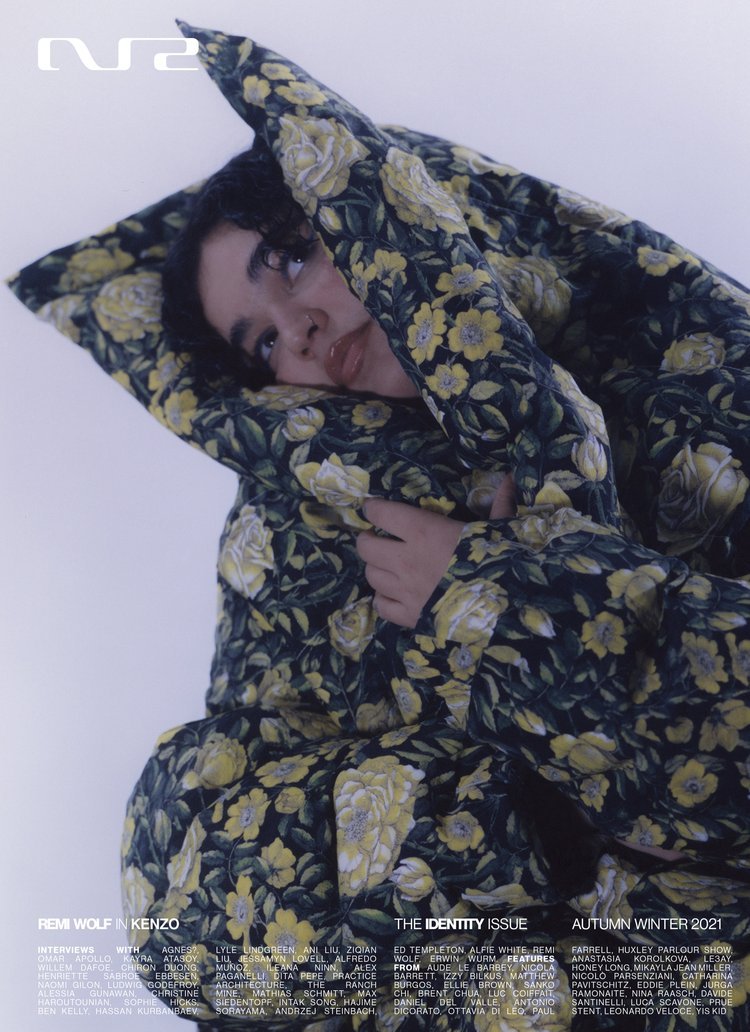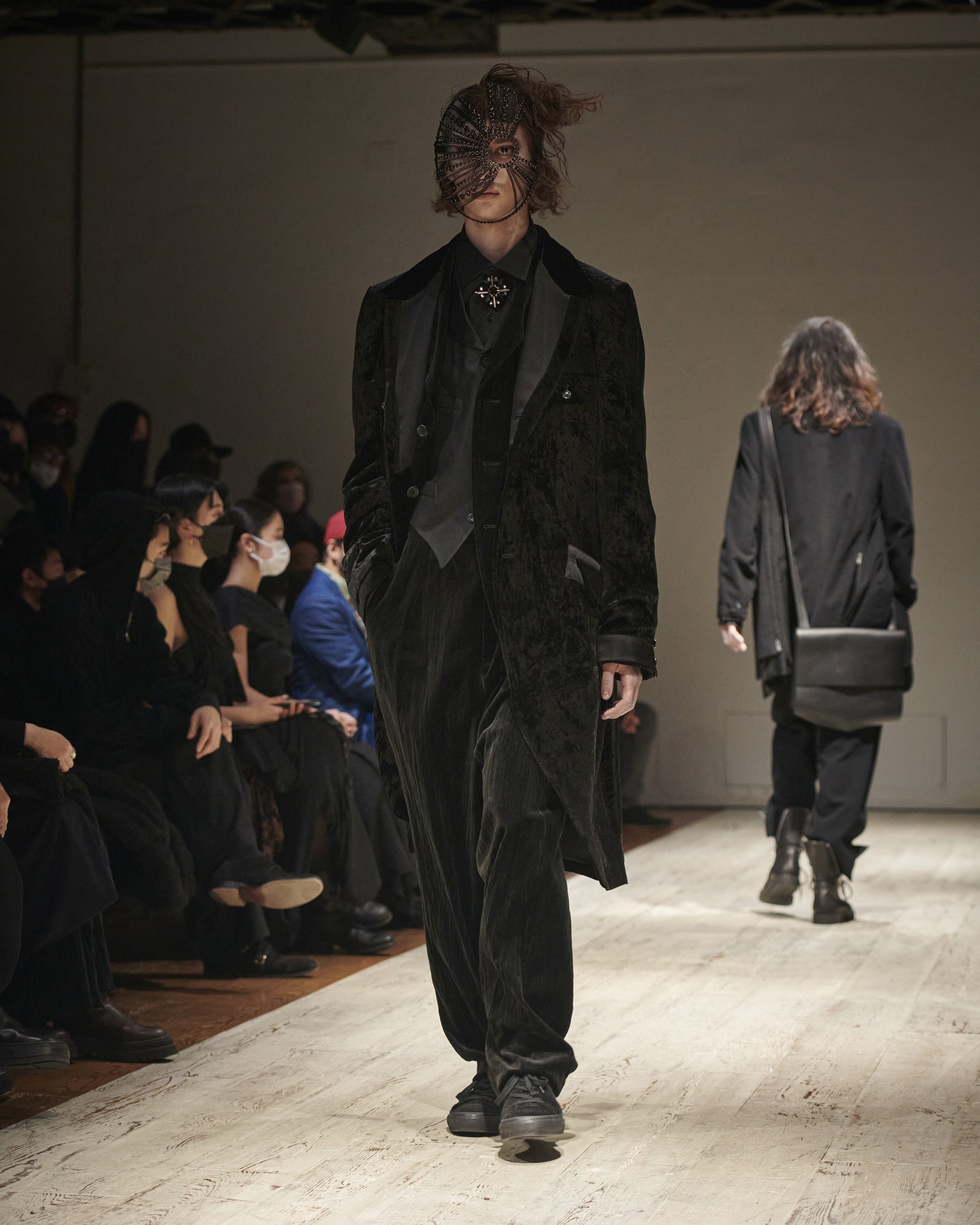From meeting at a law school to branching out the magazine into a myriad of niches, Jade Removille and Nima Habibzadeh, co-founders and creative directors of NR Magazine, sit down with Fernando Augusto Pacheco of Monocle’s The Stack to discuss NR Magazine and its recent print issue on Identity.
“NR is a print, bi-annual publication that we co-founded in 2016 in London. It is a way for us to narrate a story through different artists, photographers, cultures, and creatives that we are inspired by and that we want to give a platform to and for our readers to discover because, for us, NR is a window to what is around us and what is going on in our society,” says Jade as she introduces the magazine.
The conversation moves along until it touches upon issue no. fourteen. The Identity issue covers interviews with Willem Dafoe, Omar Apollo, Remi Wolf, and a Bottega Veneta fashion editorial special. It enshrines the readers an escape towards the creatives’ utopia: a journey through the varying creative processes, an overview of their private lives, an in-depth understanding of their philosophy, and their personal perceptions of identity. The issue opens up dialogues concerning the fluidity and fertility of identity: all masks lifted, all truths bared.
“We work with so many different people globally. We try to work with people that are not necessarily heard of from Ed Templeton who is a professional skateboarder and photographer to Eddie Plein the creator of grills. We like to touch upon so many different people within the art and culture world while also bringing together people in the music world in the fashion world. It is a combination of different people coming together,” says Nima.
Listen to the full interview here.
WORDS MATTHEW BURGOS
LATEST UPDATES
Since joining Givenchy as creative director back in June 2020, Matthew Williams has set about introducing a number of signature details and key pieces to the Parisian fashion house. One such example of this is the Mallow, the (in)famous streamlined molded rubber shoe that also features prominently in Givenchy’s SS22 campaign. For the collection, Williams brought the American artist Josh Smith on board, whose sculptures and vibrant paintings played a key inspiration for the overall vision of the season. The colours, pattern and prints of the SS22 collection are a nod to the dynamism Smith instils in his work – and a reflection of the energy with which Williams has approached his role at Givenchy.
Read More →
Launching today, Fiorucci and Napapijri unveil a collaboration that combines the practicalities of alpine outerwear with the dazzle of the disco. By joining forces, the two Italian brands celebrate a shared passion for exploring the world and their respective heritages. The technical know-how of Napapijri and the creative flare of Fiorucci become the foundations of a collection that celebrates the iconic reference points of both brands.
Read More →
For the AMBUSH Fall Winter 2022 collection, designer Yoon Ahn focuses on technical innovation. Specifically, the brand’s logo and monogram become a point of exploration for the technological possibilities of the collection. Knitwear featuring the AMBUSH logo changes colour in response to sunlight, while the monogram appears on a coat in response to rain. As much as these details capture Yoon’s desire to push the boundaries of innovation, this technological response to weather represents the designer’s interest in the natural world, too.
Read More →
The Loewe Fall Winter 2022 Men’s collection was presented in and amongst a site-specific installation by artists Joe McShea and Edgar Mosa. Titled Flags, Paris 2022, the work is composed of nearly 4000 ribbons hanging down onto the sandy runway and audience seating below. As models appear and the vision of creative director, Jonathan Anderson’s collection becomes clear, so does the meaning of McShea and Mosa’s artwork: “The flags are stripped of meaning, acting as a call to reflection.”
Read More →
For Lucie and Luke Meier, their role at the helm of Jil Sander is to provide the individual with “the tools and freedom to be what they want to be”. For their Fall Winter 2022 Men’s collection presented in the American Cathedral in Paris, that means crafting a versatile-yet-minimalist template for the wearer to adapt. Outerwear and tailoring work as the starting point for a uniform that can be adapted, suitable for day and night. The silhouettes of the collection follow a simple logic: sophisticated but casual, which feeds into the idea of establishing a blank canvas on which to build a sense of self.
Read More →
“In an era when information has become much easier to obtain globally,” explains designer Mihara Yasuhiro, “I’ve turned to localising myself with my surroundings.” The outcome is an F/W 2022 collection that delves into a moment since past, as Yasuhiro recalls Tokyo of the 1990s. The Maison Mihara Yasuhiro show was held in a shopping market in Asakusa, Tokyo – where the designer’s first offices were located 25 years ago.
Read More →
For the Fall Winter 2022 Pour Homme collection, Yohji Yamamoto staged the show at the flagship store in Aoyama, Tokyo rather than in Paris. The result was a show that felt distinctively low-key and personal for a designer of such global recognition. The collection takes its inspiration from the nineteenth century, modelled by a cast of dark yet dandy figures (including, as it happens five Japanese actors). Hair and, at time, faces are streaked and powdered grey with almost Fagin-meets-Scissorhands effect. Yet the collection is anything but raggedy.
Read More →
At the 𝓛𝓸𝓾𝓲𝓼 Dreamhouseô, imagination runs wild – specifically, the Boyhood IdeologyÆ that the late Virgil Abloh left us with. The Louis Vuitton Men’s Collection F/W 2022 marks the final act of an eight season-long play and Abloh’s swansong as menswear creative director. The collection, most of it completed before Abloh’s death in November 2021, encapsulates the legacy of the designer’s vision and his contributions (sartorially as well as creatively and intellectually) shared over his short tenure at the French house.
Read More →
At Lemaire, models travel across what feels like a vast landscape, moving across time and space. The chronophotography of the nineteenth-century scientist and physiologist, Étienne-Jules Marey is a point of reference here for Sarah-Linh Tran and Christophe Leimare. Marey layered negatives atop of one another in order to study movement of the body; the show achieves a similar effect here as models meander in front and across of one another. All on separate journeys, perhaps, but bound by the similar silhouettes they cut.
Read More →
Next week, the designer Glenn Martens will take on the role of creative director for Jean Paul Gaultier for a single season. But what relevancy does that have for the Fall/Winter 2022 collection for Y/Project? It means everything. Martens has approached this collection as a merging of alliances, making reference to the iconic designs of Gaultier, as well as his role as creative director at Diesel.
Read More →





































